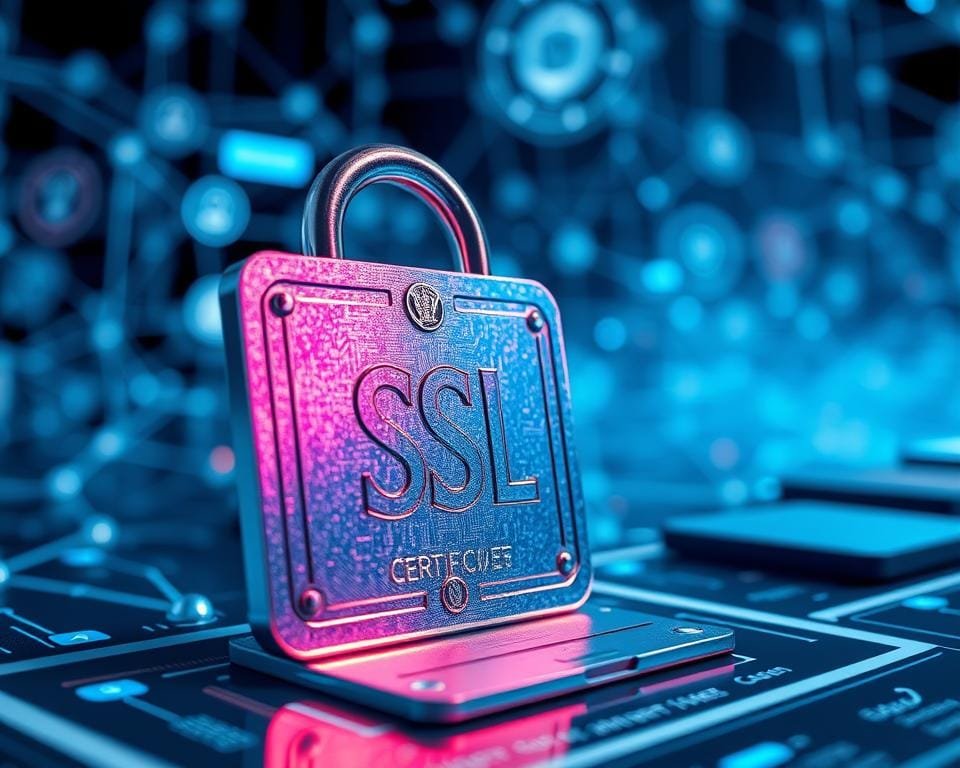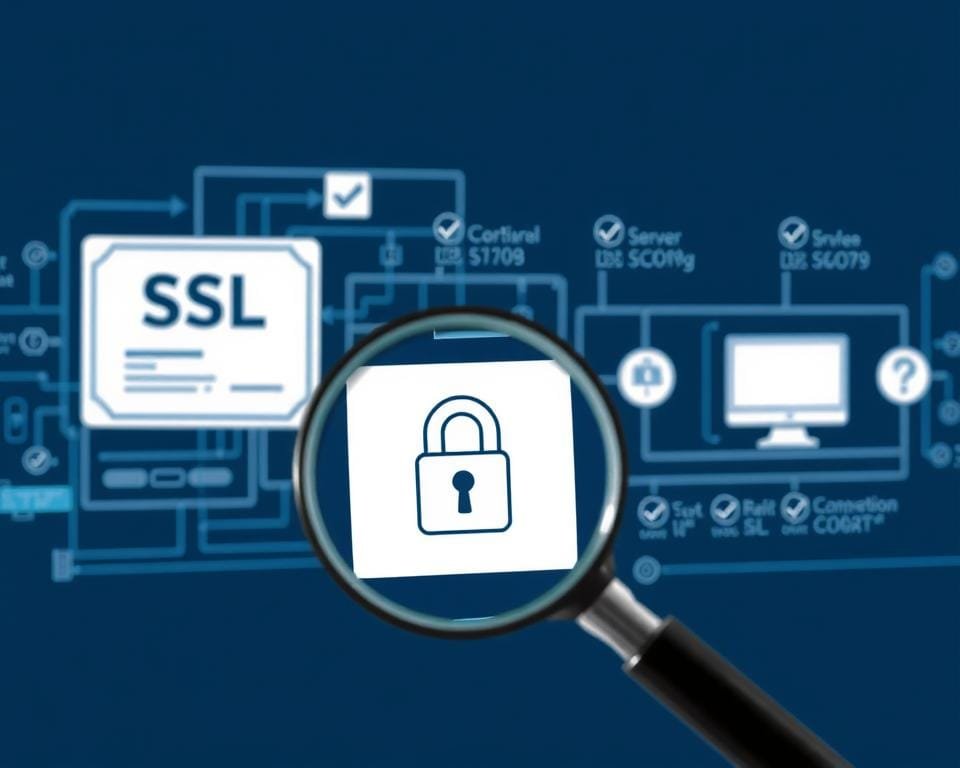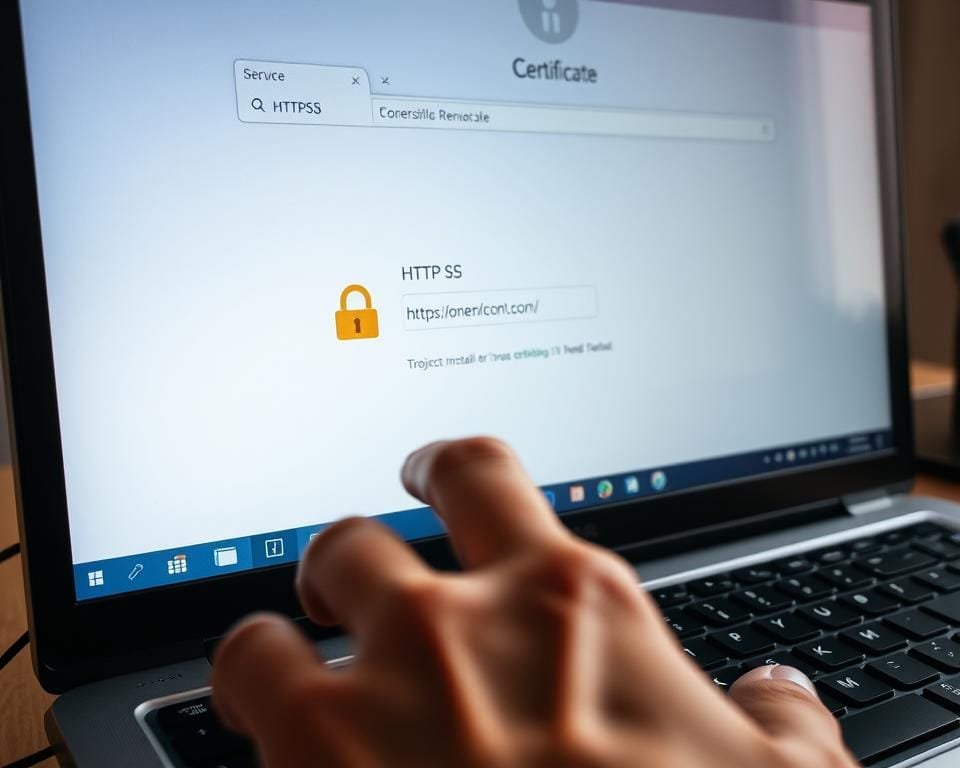
Is your website secure enough to protect your visitors’ sensitive information? In today’s digital landscape, ensuring the security of your online presence is paramount. With cyber threats on the rise, having a secure connection is no longer a luxury, but a necessity.
Visitors expect a safe browsing experience, and search engines like Google prioritize secure websites in their rankings. So, how do you ensure your site meets these expectations? The answer lies in obtaining an SSL Certificate
This article will guide you through the process of adding an SSL Certificate to your site, enhancing your online security and credibility. By the end, you’ll be equipped with the knowledge to safeguard your website and build trust with your audience.
Understanding SSL Certificates and Their Importance

In today’s digital landscape, having a secure website is no longer a luxury, but a necessity. As online transactions and interactions become increasingly common, ensuring the security of your website is paramount.
What is an SSL Certificate?
An SSL Certificate is a digital certificate that authenticates a website’s identity and encrypts the connection between a website and its visitors’ browsers. This encryption ensures that sensitive information, such as passwords and credit card numbers, remains secure.
How SSL Certificates Work
SSL certificates work by using a pair of keys: a public key to encrypt the data and a private key to decrypt it. When a visitor accesses a secure website, the SSL certificate is verified, and the connection is encrypted, protecting the data exchanged between the website and the visitor’s browser.
Benefits of Having an SSL Certificate on Bizansy.com
Having an SSL certificate on your website, such as Bizansy.com, offers several benefits, including enhanced security, improved trust among visitors, and better search engine rankings. Google prioritizes websites with SSL certificates, making them more visible in search results.
Moreover, an SSL certificate is essential for protecting sensitive user data and complying with various regulatory requirements. By installing an SSL certificate, you demonstrate your commitment to securing your users’ information, thereby fostering a trustworthy online environment.
Types of SSL Certificates for Your Website
SSL certificates are not one-size-fits-all; various types cater to different website needs. Understanding these differences is crucial for selecting the right certificate for your website’s security.
Domain Validated (DV) Certificates
Domain Validated (DV) certificates are issued after verifying the domain ownership. They are the quickest to obtain and are suitable for blogs, personal websites, or small businesses that don’t handle sensitive information.
Organization Validated (OV) Certificates
Organization Validated (OV) certificates involve a more rigorous verification process, including the organization’s identity. They offer a higher level of trust and are ideal for businesses that require a more robust validation process.
Extended Validation (EV) Certificates
Extended Validation (EV) certificates provide the highest level of validation, requiring thorough verification of the organization’s identity. They are best for large corporations, e-commerce sites, or any organization handling sensitive customer data.
Wildcard SSL Certificates
Wildcard SSL certificates allow a single certificate to secure multiple subdomains of a domain. They are convenient for organizations with numerous subdomains, offering flexibility and cost savings.
Choosing the Right SSL Certificate Website Solution

The right SSL certificate is essential for securing your website and building trust with your visitors. With various options available, it’s crucial to understand the differences to make an informed decision.
Free vs. Paid SSL Certificate Options
Free SSL certificates, such as those offered by Let’s Encrypt, are a good starting point for small websites or blogs. However, paid SSL certificates offer additional features like warranty and dedicated support. Paid options are more suitable for e-commerce sites or those handling sensitive information.
Certificate Authorities and Trust Levels
Certificate Authorities (CAs) issue SSL certificates, and their reputation affects the trust level of your certificate. Reputable CAs like GlobalSign and DigiCert offer higher trust levels. Understanding the trust level associated with different CAs is crucial for ensuring your website’s credibility.
Determining Your Website’s Security Needs
Assess your website’s specific security requirements based on the type of data you handle. For instance, e-commerce sites require more robust security measures than a simple blog. Consider factors like customer data protection and compliance with security standards.
Step-by-Step Process to Add an SSL Certificate

To ensure your website’s security and trustworthiness, follow this step-by-step guide to adding an SSL certificate. This process involves several critical steps that, when completed correctly, will enhance your website’s security and credibility.
Generating a Certificate Signing Request (CSR)
The first step in obtaining an SSL certificate is generating a Certificate Signing Request (CSR) on your web server. This involves creating a pair of cryptographic keys: a private key and a public key. The CSR is then generated using the private key, and it contains your website’s details, such as the domain name and organization information. It’s crucial to keep the private key secure, as it’s used for decrypting data encrypted with the corresponding public key.
Purchasing and Validating Your SSL Certificate
After generating the CSR, the next step is to purchase an SSL certificate from a trusted Certificate Authority (CA). You’ll need to provide the CSR to the CA and wait for them to validate your website’s information. The validation process varies depending on the type of SSL certificate you’ve chosen, ranging from automated domain validation to more rigorous organizational validation.
Installing the SSL Certificate on Your Web Server
Once you’ve obtained your SSL certificate from the CA, you’ll need to install it on your web server. The installation process depends on your server software, such as Apache or Nginx. Generally, you’ll need to upload the SSL certificate files to your server and configure your server software to use the certificate. Ensure that you also install any intermediate certificates provided by the CA to establish a complete certificate chain.
Configuring Your Website to Use HTTPS
After installing the SSL certificate, you’ll need to configure your website to use HTTPS. This involves updating your website’s configuration to serve content over HTTPS and redirecting any HTTP requests to HTTPS. You may also need to update any internal links or references to HTTP content to avoid mixed content warnings.
Verifying and Troubleshooting Your SSL Certificate Installation

Verifying and troubleshooting your SSL certificate installation is a critical step in securing your website. After successfully installing an SSL certificate, it’s essential to ensure that it’s correctly configured to avoid potential security issues and maintain user trust.
Testing Your SSL Certificate Configuration
To verify your SSL certificate configuration, you can use online tools that check for proper installation and configuration. These tools can identify issues such as certificate chain problems or mismatched certificates. Testing your SSL configuration helps ensure that your website is secure and trusted by browsers.
Common SSL Installation Issues and Solutions
Common issues encountered during SSL installation include certificate not trusted errors, mixed content warnings, and incorrect certificate installations. To resolve these issues, ensure that your certificate is correctly installed, all content is served over HTTPS, and your certificate chain is properly configured.
Tools for SSL Certificate Verification
Several tools are available to verify your SSL certificate installation, including SSL Labs’ SSL Test and Qualys SSL Labs. These tools provide detailed reports on your SSL configuration, highlighting any potential issues and offering recommendations for improvement.
SSL Certificate Management Best Practices for Bizansy.com
Effective SSL certificate management is key to maintaining a secure and trustworthy online presence. For businesses like Bizansy.com, this involves several critical practices that ensure the continuity of their online security.
Firstly, it’s crucial to keep track of certificate expiration dates. An expired certificate can lead to security warnings being displayed to users, potentially driving them away. Implementing a renewal reminder system can help mitigate this risk.
Regularly reviewing certificate configurations is also vital. This includes ensuring that all subdomains are covered and that the certificate is correctly installed on all servers. Additionally, maintaining up-to-date documentation of your SSL certificate setup can simplify troubleshooting and audits.
Another best practice is to monitor certificate trust levels. This involves keeping an eye on the Certificate Authority (CA) that issued your certificate and being aware of any changes in trust levels, which could affect your website’s credibility.
Lastly, consider implementing automated tools for SSL certificate management. These tools can help streamline the process of monitoring and renewing certificates, reducing the administrative burden and minimizing the risk of human error.
By following these best practices, businesses like Bizansy.com can ensure their SSL certificates are managed effectively, maintaining a secure and trustworthy online environment for their users.
FAQ
Q: What is the purpose of a Certificate Signing Request (CSR)?
Q: How do I know if my SSL Certificate is installed correctly?
Q: What is the difference between a Wildcard and a standard SSL Certificate?
Q: How long does it take to obtain an SSL Certificate?
Q: Can I use an SSL Certificate on multiple servers?
Q: What happens when my SSL Certificate expires?
Q: How do I renew my SSL Certificate?
You may also like:










